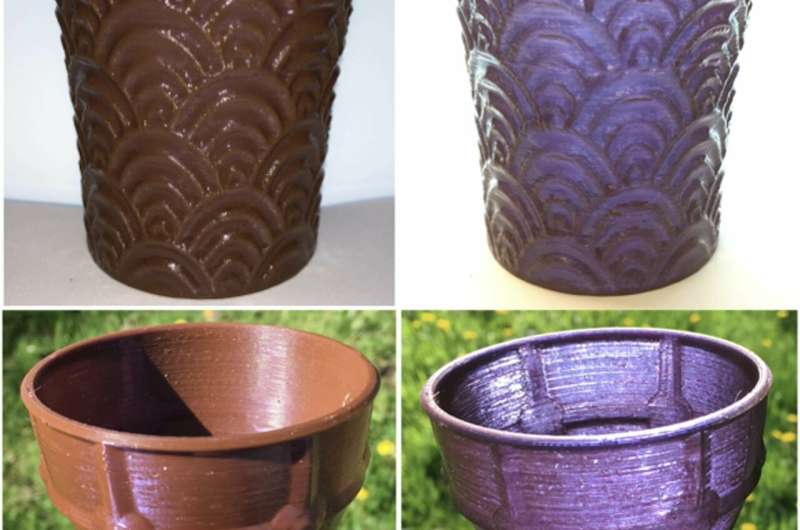The same 3D printed dichroic nanomaterial shows different colours and opacities when the light is from the same side of the observer (reflection) or on the opposite side (transmission). Credit: Wageningen University & Research
Metallic nanoparticles have been used as glass colorants since the Roman Empire. One of the most famous pieces of pottery from the period is the Lycurgus cup. The nanoparticles embedded in this cup have an optical peculiarity, presenting different colours depending on the angle of the illumination. This effect is called dichroism. Now, scientists from Wageningen University & Research have made 3-D printed objects showing this dichroic effect.
The researchers synthesized a special type of gold nanoparticle with different sizes. These nanoparticles were then embedded in a common 3-D printing material (PVA) used in standard, off-the-shelf 3-D printers.
A bit of gold
The amount of gold in the material is minute, a mere 0.07 weight percent. Such a small amount of gold doesn't change the printability of the material, which is the same as normal material. However, even with this minimal amount of gold, the nanocomposite material has a distinct dichroic effect, showing a brown opaque colour in reflection (when the illumination and the observer are on the same side) and a violet transparent colour in transmission (when the illumination and the observer are on the opposite sides).
This innovation opens the doors to a new class of 3-D printable nano materials with the intrinsic properties of the nano world, in this case, optical properties, which are retained even in a 3-D printed object. Such peculiar optical properties could be used by artists, and applied in nanocomposite-based lenses and filters.
The researchers are now working on improving this methodology using different nanoparticles and different materials.
More information: Lars Kool et al. Gold nanoparticles embedded in a polymer as a 3D-printable dichroic nanocomposite material, Beilstein Journal of Nanotechnology (2019). DOI: 10.3762/bjnano.10.43
Provided by Wageningen University























